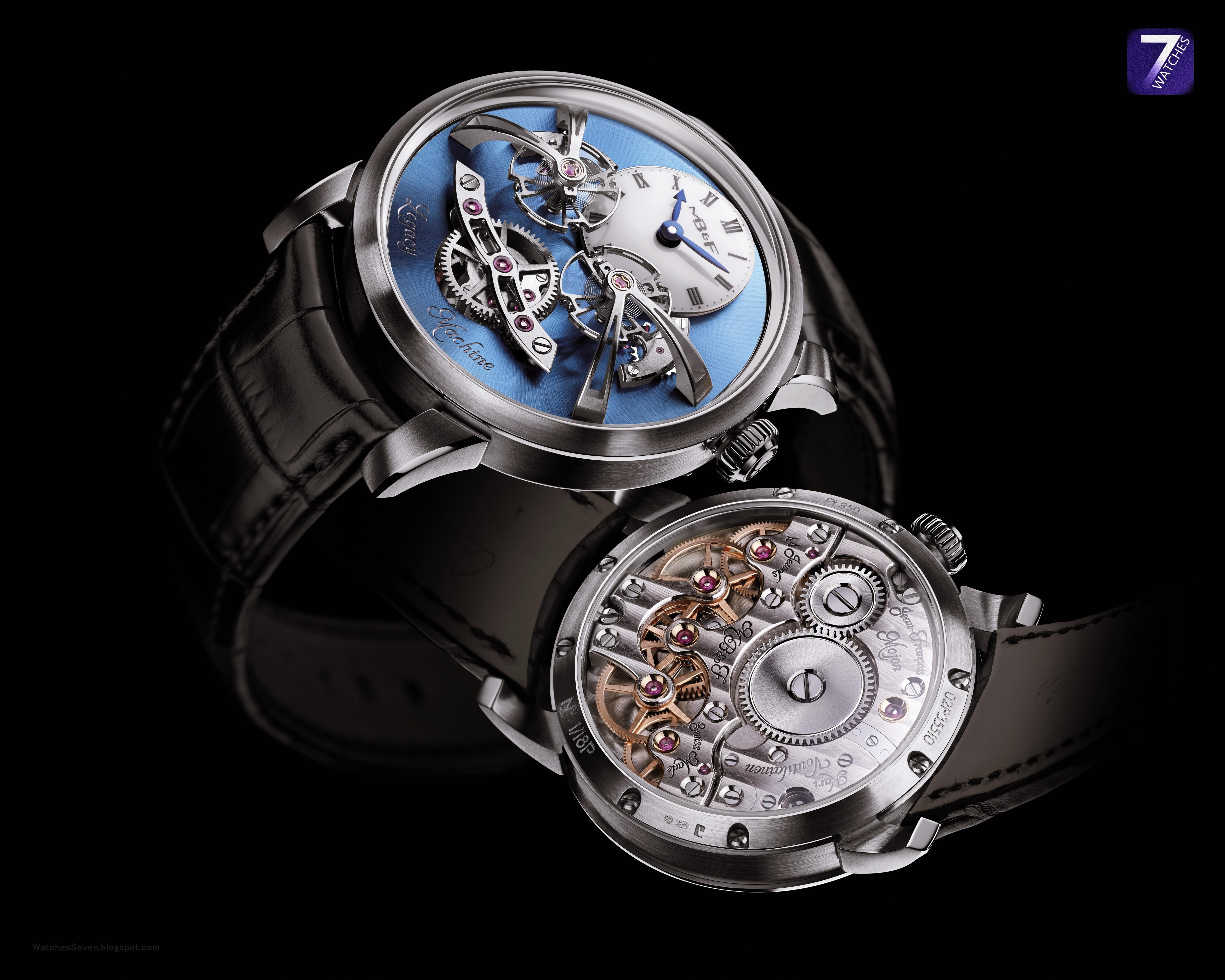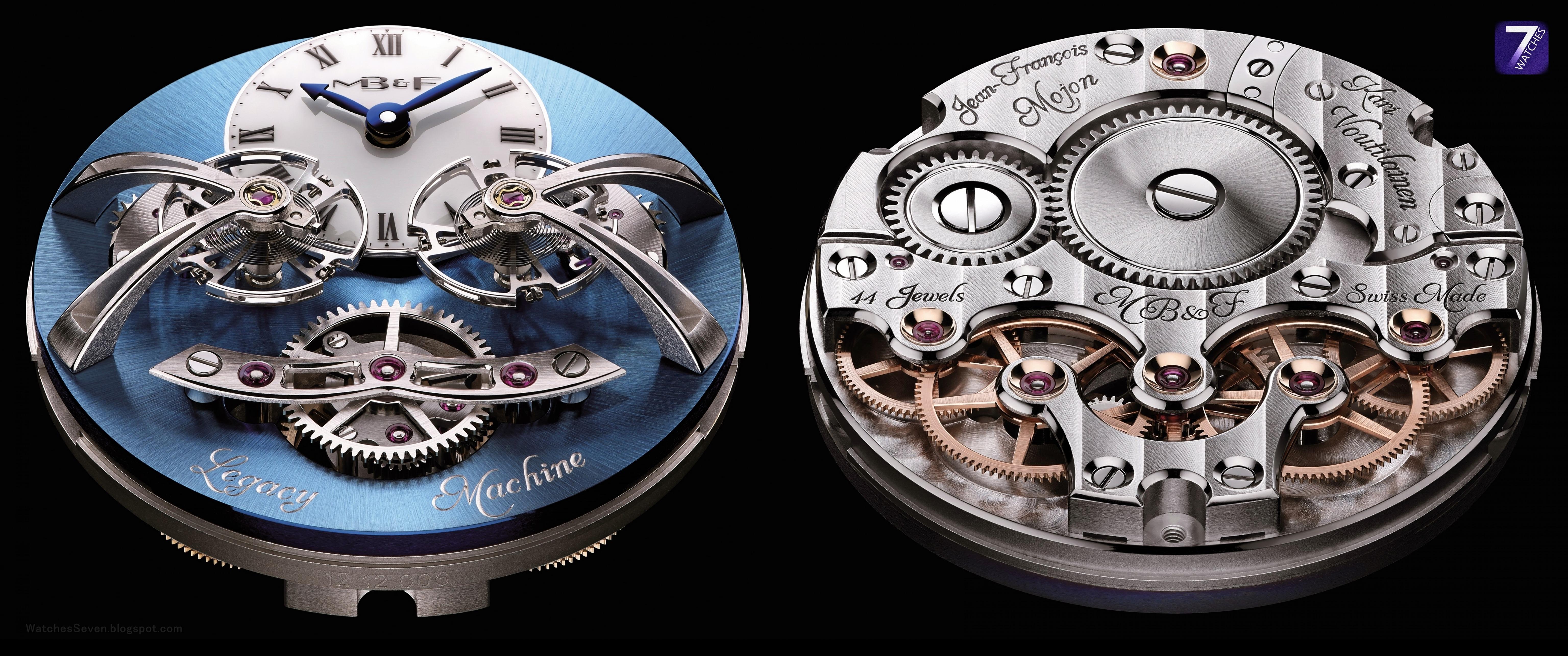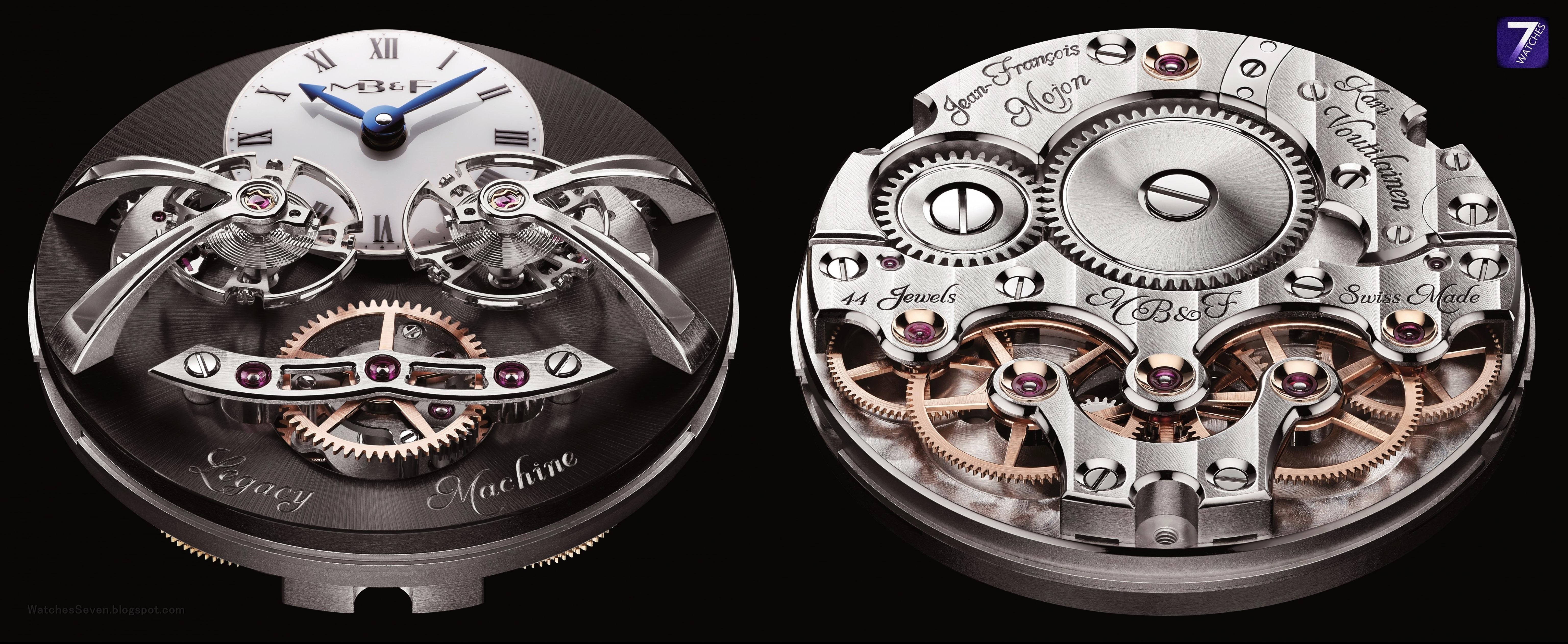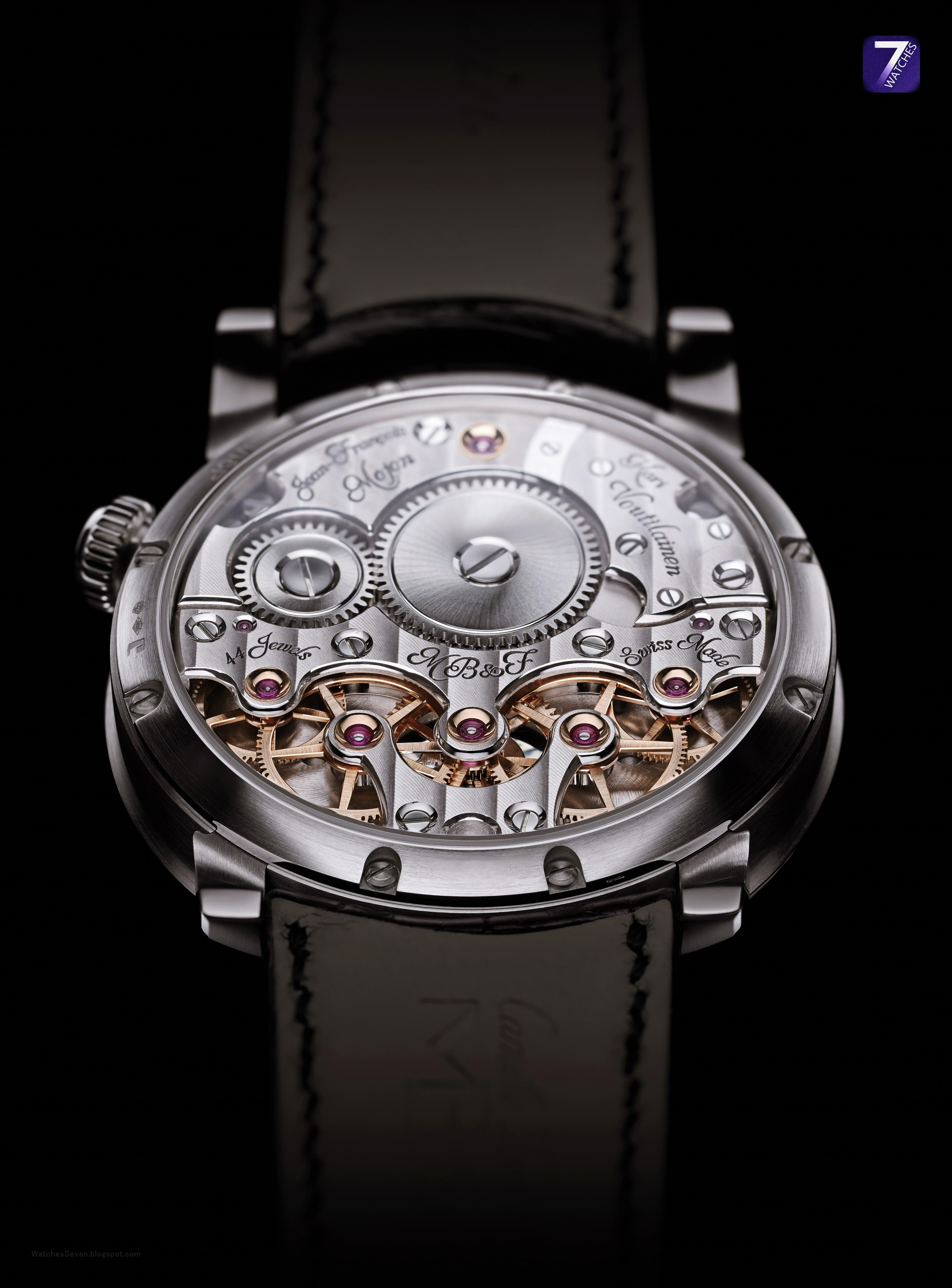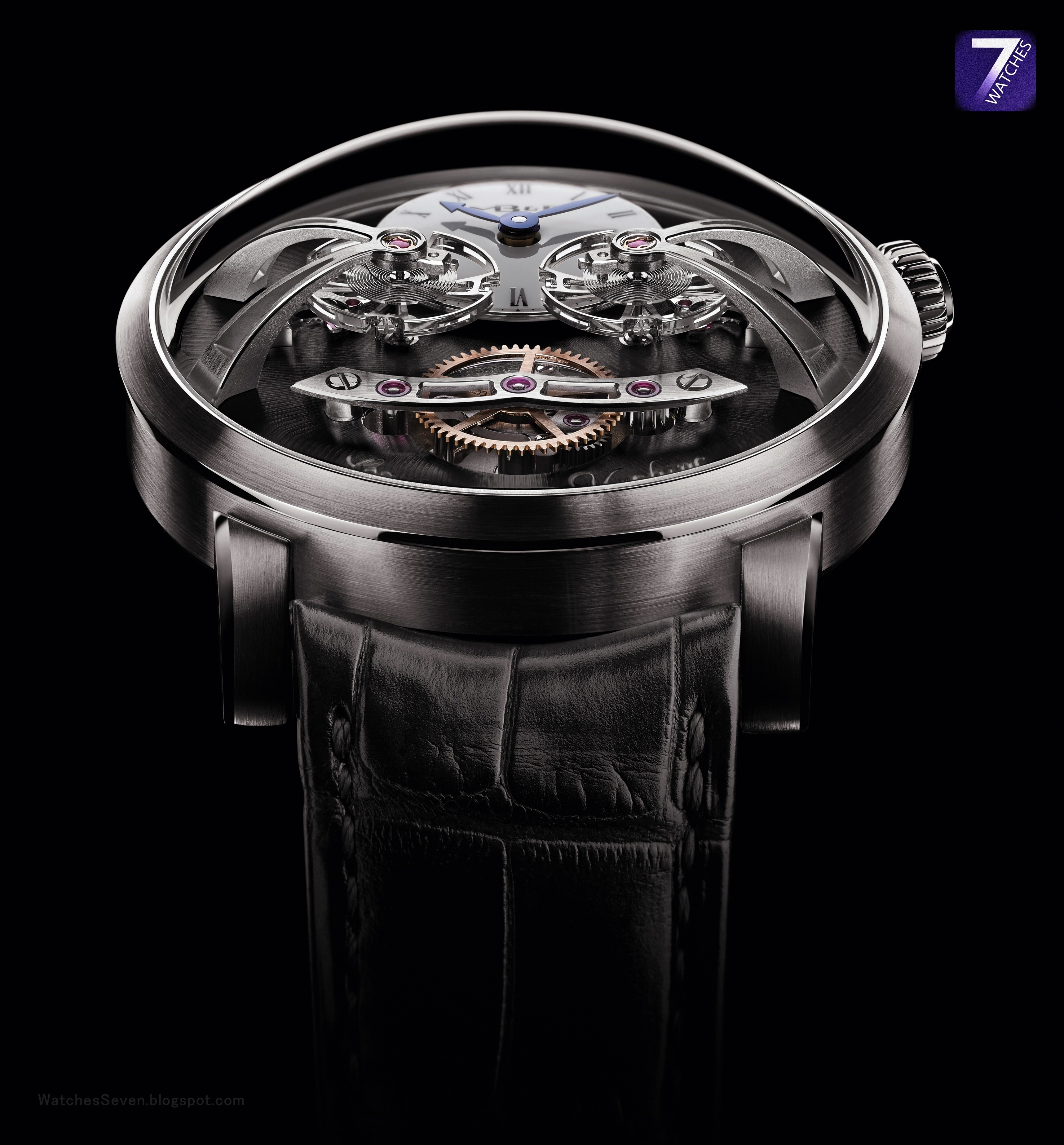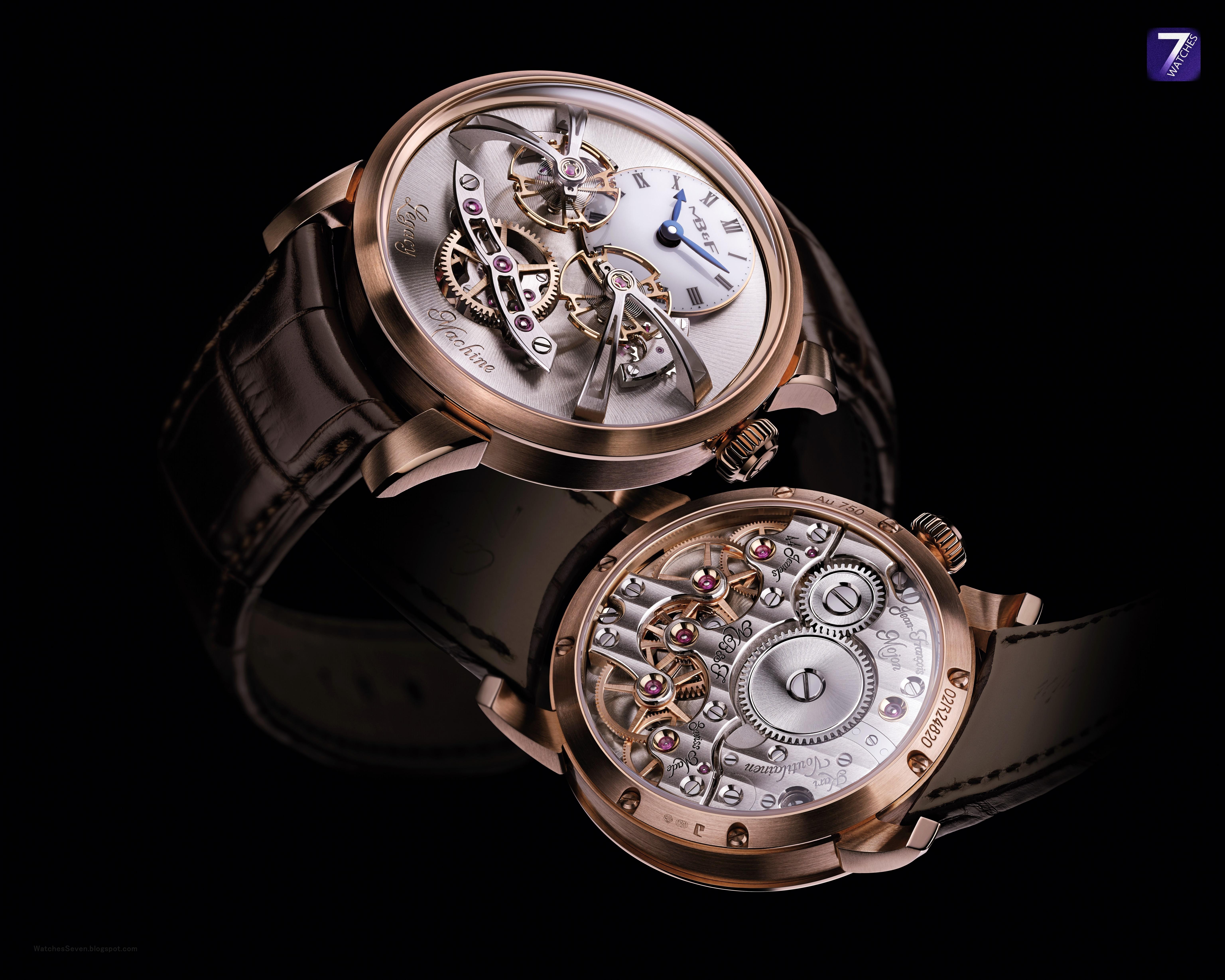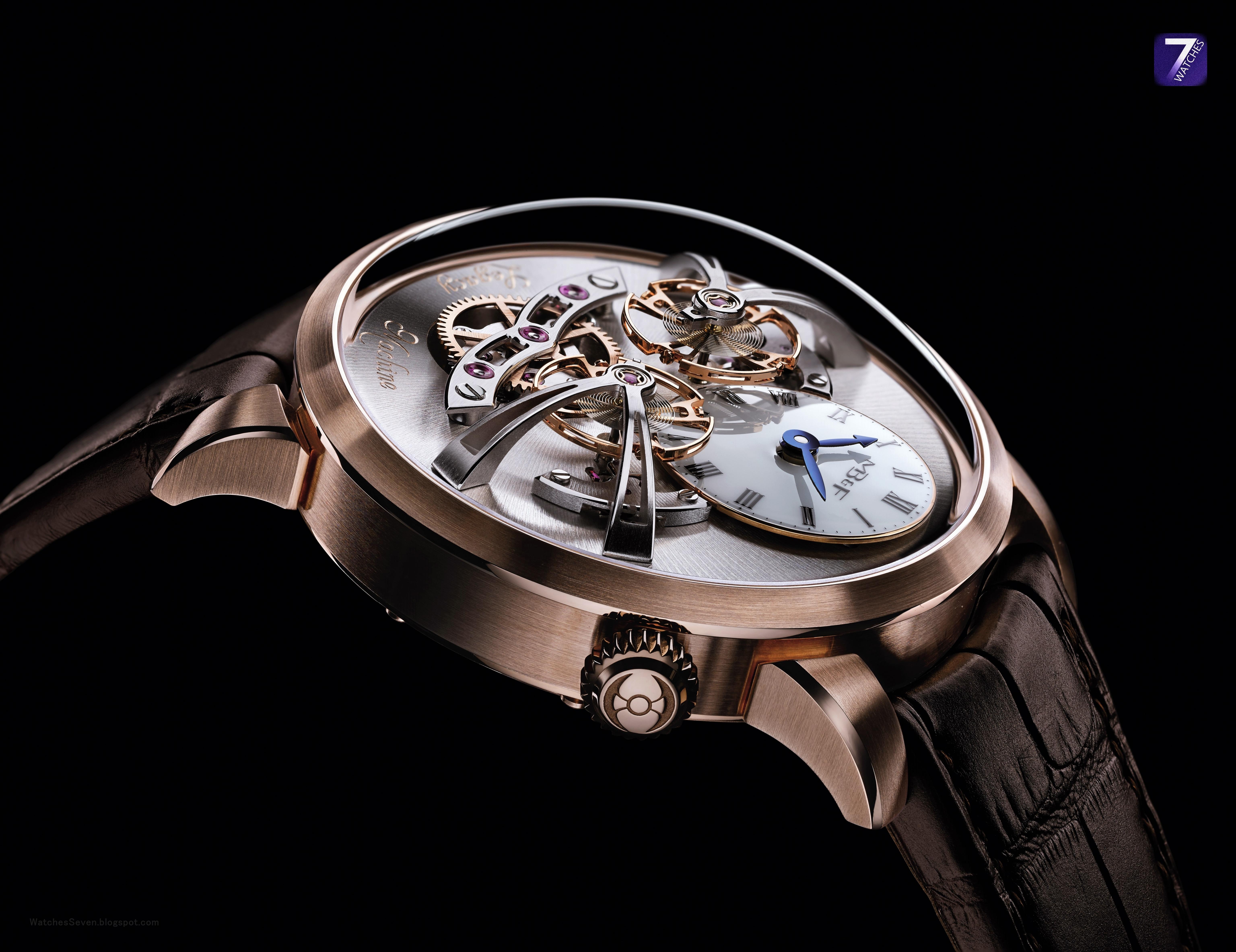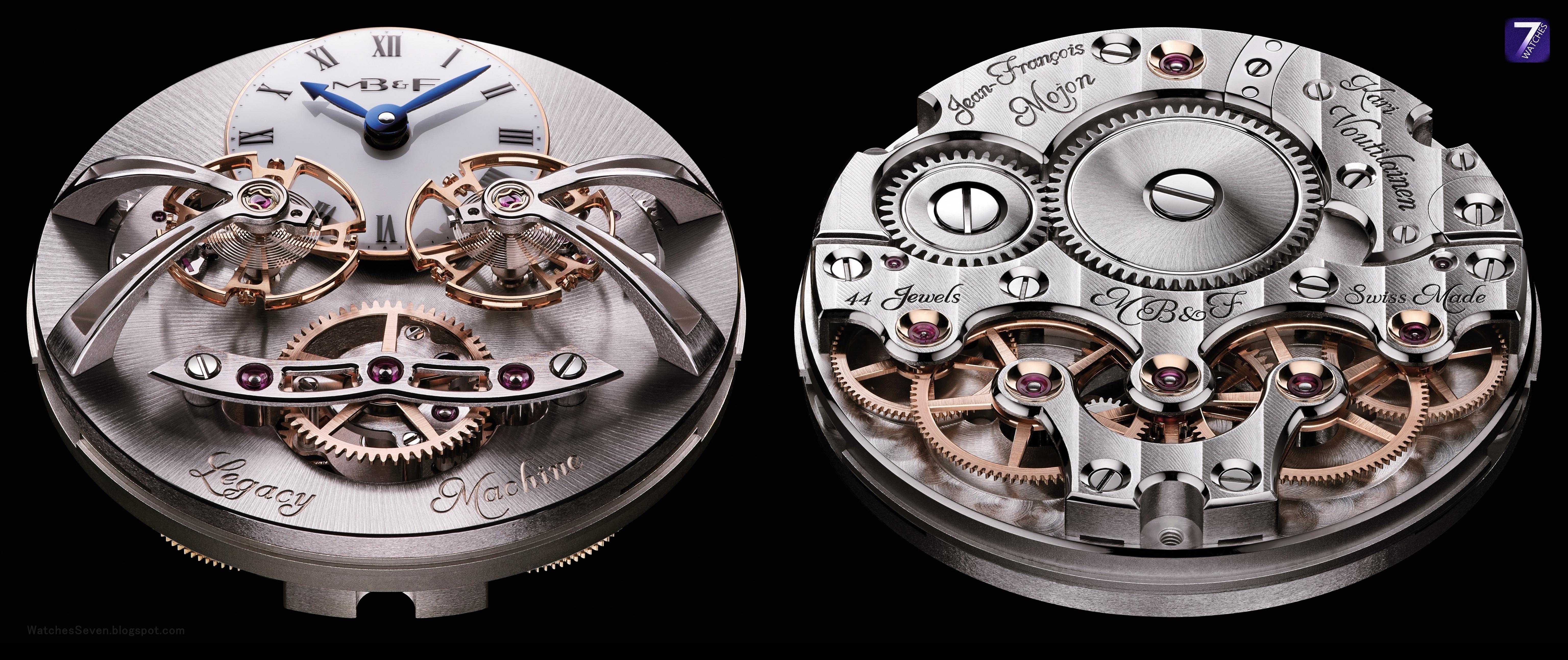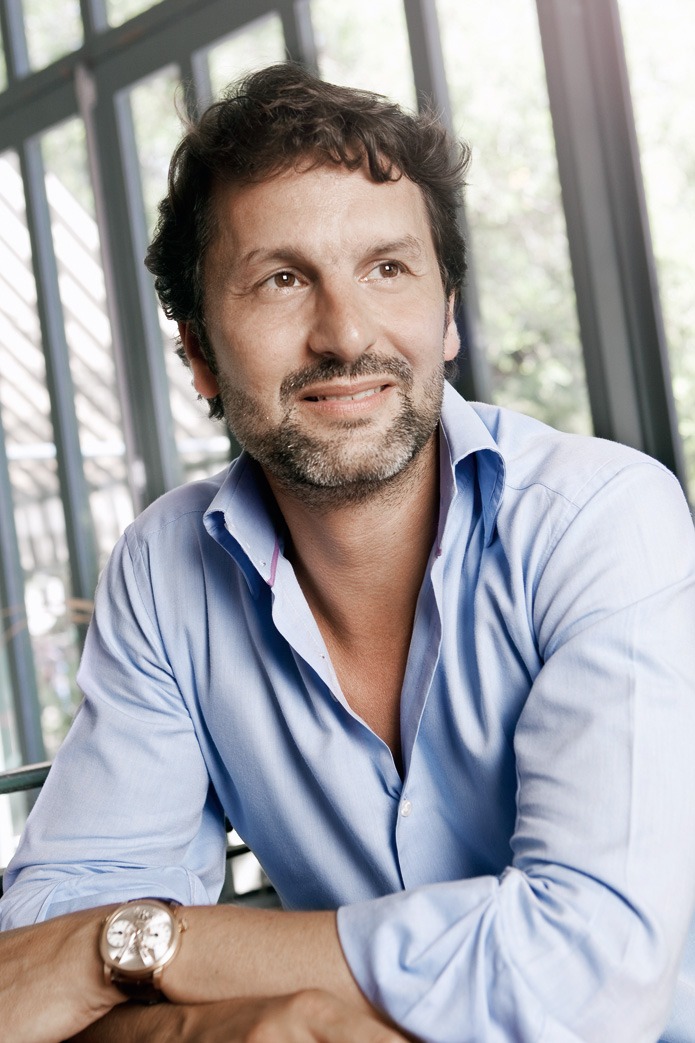MB&F - Legacy Machine ML No. 2 NEW
The innovative minds from MB & F have been always entertaining the watch connoisseurs with the exceptional horological machines with futuristic designs and recently they have also introduced a new line - Legacy Machines, which are exceptional reinterpretations of significant horological inventions by the greatest watchmakers in history. The first model under this line, the LM No. 1 was launched in 2012 and the brand now welcomes a new member - LM 2- to the Legacy Machines line.
Click on the mouse wheel to see the large size ... BIG FOTO
Legacy Machines are wondrous reinterpretations of significant horological inventions by the greatest watchmakers in history. So the contemporary look endowed by the otherworldly appearance of Legacy Machine No. 2’s dual flying balances, suspended high above the dial from four gracefully arcing arms, may at first appear paradoxical. But make no mistake; LM2 is a timepiece tracing its lineage back over 250 years to three of the greatest watchmakers who ever lived: Abraham-Louis Breguet (1747– 1823), Ferdinand Berthoud (1727– 1807) and Antide Janvier (1751– 1835).
Click on the mouse wheel to see the large size ... BIG FOTO
These horological legends of the 18th century are united not only by their inventive genius, but also by the fact that they have all constructed clocks and watches with two balances. Oscillating on high, the exalted double balance wheels of LM2 were inspired by, and pay homage to, one of the rarest mechanisms in the history of watch-making: the dual regulator. And rarer still, the average rates of Legacy Machine No. 2’s dual regulators are transmitted by a differential to a single gear train, where the majority had two separate movements.
Click on the mouse wheel to see the large size ... BIG FOTO
On display under a domed sapphire crystal cupola, the dial of Legacy Machine No. 2, which is actually the top plate of the exquisitely finished movement, is an object lesson in symmetrical simplicity. Top to bottom: the white stretched lacquer sub dial at 12 o’clock, with its blued gold hour and minute hands, is visually balanced by the large, raised differential at 6 o’clock.
Left to right: the two flying balances and their escapements are identical mirror images, right
down to the position of the stud holders pinning their balance springs.
Click on the mouse wheel to see the large size ... BIG FOTO
While the levitated oscillating balance wheels of the binary regulators catch and hold the viewer’s gaze, it is the large planetary differential sitting proud of the dial that is the real heart of Legacy Machine No. 2. In an incredible feat of micro-engineering − and the sheer paucity of timepieces with multiple regulators connected via a differential attests to the enormous difficulty in creating such a complex high-precision mechanism − the differential has three roles:
1. Transferring power to each of the regulators; 2. Receiving the individual timing rates from each balance; and 3. Transmitting the average rate of the two regulators to the gear train, where it finally manifests itself as the displayed time.
Click on the mouse wheel to see the large size ... BIG FOTO
The movement of Legacy Machine No. 2 was developed to MB&F’s specifications by award-winning watchmaker Jean-François Mojon (Best Watchmaker at the 2010 Grand Prix d’Horlogerie de Genève) and his team at Chronode. Acclaimed independent watchmaker Kari Voutilainen ensured that the movement’s aesthetic style was consistent with high- quality traditional timepieces of the 19th century and for specifying the superlative hand- finishing.
Click on the mouse wheel to see the large size ... BIG FOTO
Immaculate Geneva waves, gold chatons, mirror-polished bevels and bridges designed with deliberate internal bevelled angles (which cannot be finished by machine) showcase the movement’s peerless fine finishing. Consistent with MB&F’s spirit of transparency, the names of the two men responsible for the movement are hand engraved on the back.
Two and a half centuries after three of the world’s greatest watchmakers put two balance wheels into their movements; MB&F celebrates their pioneering works by creating LM2, a timepiece with two balances hovering outside the movement.
Legacy Machine No. 2 is available in 18k red gold, 18k white gold and a limited edition of 18 pieces in platinum 950 that features a striking sky-blue dial.
Even today with computer aided design programs (CAD) and ultra-high-precision machines CNC machines, the sheer complexity of high-end mechanical watch movements requires skilled assembly and regulation to achieve good timekeeping over a range of positions. Whether the watch is laid flat, vertical (on its edge), crown up or crown down, slightly affects the components inside – and the balance in particular – which in turn slightly changes the timing rate.
In the 18th century, higher manufacturing tolerances coupled with low-quality oils meant that it was virtually impossible to regulate a movement to the high precision we have come to expect today. So it should come as no surprise that the greatest horologists of the period experimented with a wide variety of mechanisms to improve timekeeping.
Click on the mouse wheel to see the large size ... BIG FOTO
While Ferdinand Berthoud (1727– 1807) averaged his two regulators mechanically, Abraham- Louis Breguet (1747– 1823) and Antide Janvier (1751– 1835) both created double regulator timepieces using the phenomena of resonance to average the rate of the two balances, It should be noted that the majority of dual regulator timepieces, especially those using resonance to couple the two systems, had two complete movements rather than just two regulators. The fact that these horological geniuses made such a limited number of clocks and watches with double regulators (just a few each), indicates that they doubted that the reward was worth the effort.
Nearly 100 years later, in the 1930s a few of the very best students at the Watchmaking School of the Vallée de Joux made double regulator pocket watches with the rates of two balances averaged by a planetary differential. The students usually made two pieces each – one for themselves and one for the school – and it is thought that 10 such timepieces exist.
Click on the mouse wheel to see the large size ... BIG FOTO
Philippe Dufour, an independent watchmaker based in the Vallée de Joux saw one of these pocket watches and was inspired to create his Duality. Launched in 1996, the Duality was the first known wristwatch to feature two balances joined by a differential. And while there have been a (very) few other double balance wristwatches coupled via differentials.
The advantage of using a planetary differential is that the two balances beat at their natural rate, with the differential supplying the average of the two completely independent frequencies. Other mechanisms when coupled have one balance slowing down or speeding up the other to achieve an average rate and this induces slight stresses in the system.However, the rarity of all dual regulator movements is testimony to the difficulty in their realisation and regulation.
Click on the mouse wheel to see the large size ... BIG FOTO
While superficially Legacy Machine No. 2 may look like a traditional round watch, its three- dimensional architecture offers visual treats on multiple levels. What looks at first glance to be the main dial is actually the top plate of the movement, which has been finely engraved, plated (or blued for the platinum model) and then hand-engraved with Legacy Machine below the differential.
Slightly raised above the surface is the hour-minute sub dial, its fine gold circumference highlighting the pure white of the stretched lacquer dial, which is created by applying and heating multiple layers of lacquer, causing them to stretch tightly over the surface of the dial.
Click on the mouse wheel to see the large size ... BIG FOTO
The white contrasts superbly with the bright blued 18k gold hands. The hands are slightly curved to follow the slightly convex surface of the sub dial. To ensure aesthetic purity of the dial and its traditional Roman numerals, a sophisticated fixation underneath negates the necessity of visually obtrusive screws.
The planetary differential also sits proud of the surface, supported by a stunning double- arc mirror-polished bridge inset with three large jewels. The complex differential is the key element in the double regulator system and raising it just above the movements enables the mechanism to be better appreciated.
Suspended above both the sub dial and the differential are the two oscillating bespoke balance wheels. The dual balances feature Breguet overcoils, inset with four fully functional timing screws. The two balances are mirror images of each other so that they react differently to different forces. The distance between the balance wheels has been carefully and deliberately calculated to avoid resonance, as this would negatively interfere with regulation.
Click on the mouse wheel to see the large size ... BIG FOTO
Those elegant majestically curved arms suspending the flying balances are sculptural works of art in themselves. The elongated triangular cut out section could not be created by the usual method of wire electro erosion, but necessitated the creation of an electrode precisely shaped to the form of the cut out section.
Independent master watchmaker Kari Voutilainen assumed responsibility for ensuring the historical accuracy of the style and finishing of the Legacy Machine No. 2 movement. A finely engraved sun-ray pattern on top of the movement plate (dial side) subtly catches the eye at certain angles without distracting attention from the pure white sub dial, flying balances and raised differential. But it is in the style and finish of the bridges and plates visible through the display on the back of the movement that Voutilainen has excelled in providing exquisite historical fidelity, both the shape of elegantly curved bridges and the traditionally wide spaces between the bridges and between the bridges and the case.
Click on the mouse wheel to see the large size ... BIG FOTO
On the back of the movement, over-sized ruby jewels set in highly-polished countersunk gold chatons provide striking visual counterpoints to the Geneva waves traversing the sensually curved bridges. While providing historical links with the large jewels seen in high- grade antique pocket watch movements, the ruby bearings have a practical application in reducing wear by accommodating large diameter pinions and holding more lubricating oil.
Click on the mouse wheel to see the large size ...
Maximilian Büsser has had a long affinity with pocket watches of the 18th and 19th centuries.Virtually all horological complications we see today were not only imagined in that period, they were developed using just paper and pen (no sophisticated computer programs), components were produced to extremely high precision using – by today’s standards – fairly primitive machines (no electricity) and finely finished, assembled and regulated to an incredibly high quality that we still strive to match today. Their generous size compared with modern wristwatches allowed for uncluttered movement architectures with beautifully shaped bridges and plates.
While MB&F’s futuristic Horological Machines have a firm foundation in the very best of traditional horology, Büsser wanted to pay homage to that rich tradition by imagining the type of timepieces he might create if he had been born 100 years earlier, i.e. 1867 instead of 1967. With its two, flying balances raised planetary differential, historical bridge designs and classical fine-finishing, LM2 celebrates historical dual regulator watches with flair and passion.
-------------------------------------------
Technical details
Movement
Three-dimensional horological movement developed exclusively for MB&F by Jean-François Mojon at Chronode, and Kari Voutilainen Manual winding with single mainspring barrel
Power reserve: 45 hours
Differential: Planetary differential comprising 3 gears and 5 pinions
Balance wheels: Two bespoke 11mm balance wheels with four traditional regulating screws floating above the movement and dials
Balance spring: traditional Breguet curve terminating with stud holder
Balance frequency: 18,000bph/2.5Hz
Number of components: 241
Number of jewels: 44
Chatons: gold chatons with polished countersinks
Fine finishing: superlative hand finishing throughout, respecting 19th century style;
polished internal bevel angles highlighting handcraft;
polished bevels; Geneva waves; hand-made engravings
Functions
Hours and minutes
Planetary differential transmits the average rate of the two regulators to the single gear train
Case
Available in 18k red gold, 18k white gold, or platinum 950 in a limited edition of 18 pieces
Dimensions: 44mm wide x 20mm high
Number of components: 45
Sapphire Crystals: High domed sapphire crystal on top and sapphire crystal on back with anti-reflective coating on both sides
Strap
Black or brown hand-stitched alligator strap with 18k gold tang buckle to match case
-----------------------------------------------
www.facebook.com - MBandF
---------------------------------------------------------
www.MBandF.com


